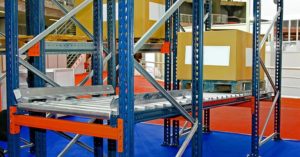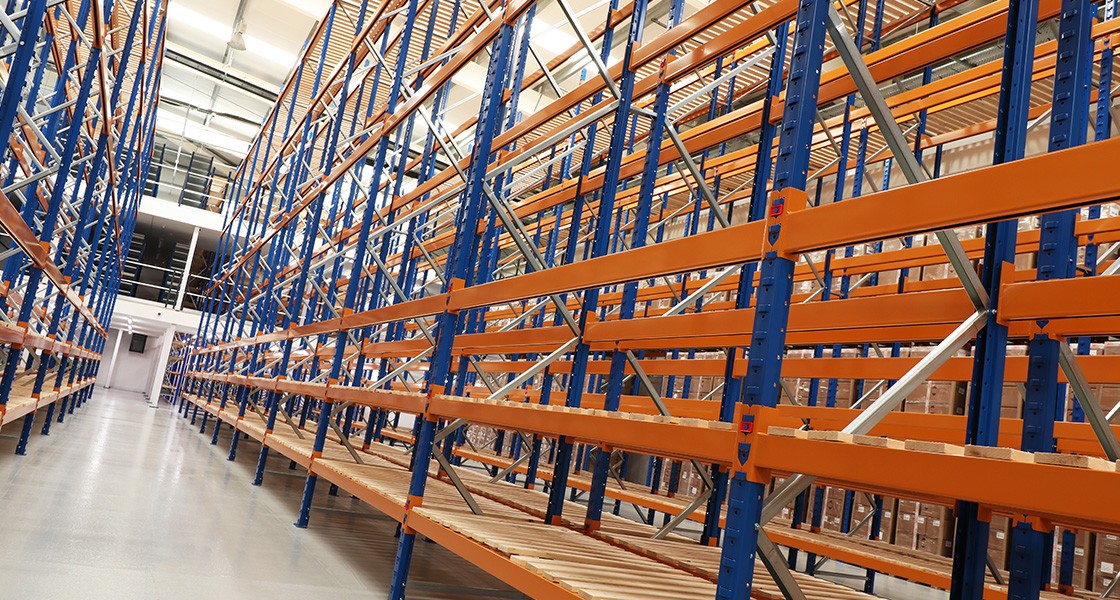Via Cyzerg : How to Choose a Warehouse Racking System?
In today’s fast-paced and highly competitive markets, proper inventory management is paramount to streamlining warehouse operations. It is one of the many challenges faced by warehouse professionals, but it can be eased by selecting the right warehouse racking system.
So, in this article, we’ll discuss what a warehouse racking system is, the factors to consider while selecting a suitable racking system, and the different types of racking systems.
What is a Warehouse Racking System?
A warehouse racking system is a storage solution designed to stack materials in horizontal rows with multiple levels. These systems can help you manage and better utilize your warehouse space while organizing cargo to streamline operations.
Factors to Consider When Selecting the Right Racking System
Each warehouse has its own set of requirements. The right racking system must be able to increase your space utilization without hampering your operations, especially the picking process.
To know which racking system is appropriate for your warehouse, consider these factors:
Budget – The estimated cost per pallet. Consider this factor while making sure that the racking system fulfills all your needs.
Floor Utilization – The ability of a racking system to maximize the warehouse floor space.
Storage Utilization – The amount of space you can utilize in the racking system. The amount you need will depend on the quantity, size, and weight of your cargo.
Forklift Accessibility – The ability to accommodate forklifts used for bulky cargo. This takes into consideration the amount of aisle width required for forklifts to maneuver.
Versatility – The ability of racking systems to accommodate a wider range of goods.
Inventory Management – The order of inventory retrieval required by the warehouse.
The Different Warehouse Racking Systems
Selective Racking System:
The selective racking system is the most popular racking system due to its inexpensive design and its having the largest selection of sizes and accessories. This racking system is excellent for standard storage for all requirements that call for immediate access to products.
Budget: $45 – $65 per pallet
Floor Utilization: 40%
Storage Utilization: 90 – 95%
Forklift Accessibility: More than one forklift can be used due to wider aisles and multiple access.
Versatility: Can handle different types of goods.
Inventory Management: First in, First Out (FIFO)

Drive-In Racking System:
The drive-in racking system offers maximum density storage of products in your warehouse. It eliminates aisles in a warehouse facility and is excellent for storing large amounts of similar products in limited space.
Budget: $160 – $185 per pallet
Floor Utilization: 65%
Storage Utilization: 60 – 65%
Forklift Accessibility: Supports forklifts.
Versatility: Products cannot be mixed in each row.
Inventory Management: Last In, First Out (LIFO)
Double-Deep Racking System:
The double deep racking system is a variant that provides a nice increase in density but requires special equipment (extendable forks) and is slower to operate. It is the best compromise between a selective and a high-density racking system.
Budget: $50 – $70 per pallet
Floor Utilization: 60%
Storage Utilization: 85 – 90%
Forklift Accessibility: Supports forklifts with extendable forks.
Versatility: Best for storing the same SKU items.
Inventory Management: First In, Last Out (FILO)
Pallet Flow/Live Racking System:
Pallet flow racks are a high-density storage system that uses a combination of elevated rails and dynamic components such as gravity rollers, conveyors, etc. These warehouse storage racks use the power of gravity. Using this racking system can double or even triple the storage capacity of your warehouse and is better utilized for expiration-date-sensitive products.
Budget: $170 – $185 per pallet
Floor Utilization: 70 – 75%
Storage Utilization: 85 – 90%
Forklift Accessibility: Supports forklifts.
Versatility: Best for storing the same SKU items and high-volume items.
Inventory Management: First In, First Out (FIFO)

Push Back Racking System:
The push back pallet racking system offers more pallet storage while also maintaining better selectivity as different lanes are used for each SKU, making them easier to locate, pick, or put-away. Push back warehouse storage racks use front loading/unloading, which eliminates the need for multiple aisles.
Budget: $275 – $295 per pallet
Floor Utilization: 75%
Storage Utilization: 75%
Forklift Accessibility: Supports forklifts.
Versatility: Best for storing the same SKU items.
Inventory Management: Last In, First Out (LIFO)
Narrow Aisle Racking System:
Narrow aisle racking emulates the characteristics of selective racking, which offers better access to every pallet. The warehouse storage racks set up high-density storage by making better use of the floor area and roof height.
Budget: $50 – $60 per pallet
Floor Utilization: 90%
Storage Utilization: 95%
Forklift Accessibility: Not accessible by regular forklift, needs articulated trucks or turret trucks.
Versatility: A variety of items can be stored.
Inventory Management: First In, First Out (FIFO)

Summary
Selecting the right warehouse racking system usually proves to be an exhausting task due to the wide variety of racking systems available in the market. The best way to avoid getting overwhelmed with this task is to consider the factors mentioned above. The right warehouse racking system will help you maximize your space for proper inventory management and also help streamline warehouse processes.
If you are ready to automate inventory management or are looking for a solution to increase efficiency, reach out to us at SP Kitchen Equipment for racking solutions.

